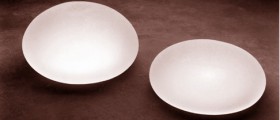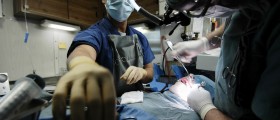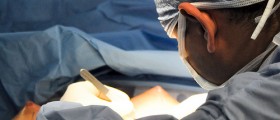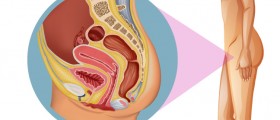HRT - Hormone Replacement Therapy
Women going through menopause sometimes resort to hormone replacement therapy (HRT) to reduce the symptoms of this condition, which involves taking a combination of estrogen and progesterone hormones in the form of tablets, skin patches or gel to restore their balance in the body. HRT implants are also available, but as they only contain estrogen, progesterone needs to be taken as well.

Description
HRT implants are the small pellets releasing estrogen into the bloodstream, as they dissolve after being inserted under the skin of a buttock, thigh or abdomen. This implant needs to be replaced every 2 to 12 months depending on the amount of hormone it contains. Some women find implants more practical than gels, patches or tablets, since they do not have to worry about taking them every day.
- A blood test is requested 2 weeks before the next implant. Your implant may be deferred if the result is too high.
- Implants are inserted under the skin, usually in the abdomen (stomach) or in the buttock. With a local anaesthetic, a small 5mm incision (cut) is made in the skin. Using an ‘introducer’ the implant is inserted under the skin into the fatty layer. The wound is covered with ‘steristrips’ and a sterile dressing. This should remain in place for 48 hours and the wound kept dry. Occasionally a soluble stitch is used if the wound continues to bleed. This usually dissolves and falls out in 7-10 days, but if not it should be removed by a healthcare practitioner.
- Estrogen implant levels in the blood may accumulate with time. Studies have found that the estradiol may reach higher than normal levels in about 3% of women resulting in a return of symptoms sooner than 6 months. This is known as tachyphylaxis. If your estradiol results are high we will adjust your treatment accordingly and your next implant may be deferred.
- If you still have your uterus (womb) you will also be prescribed a progestogen/progesterone. This is to prevent the risk of developing endometrial hyperplasia (thickening of the womb lining) – a future risk for endometrial cancer. Without adequate progestogenic opposition the additional risk increased cancer risk is 5 cases per 1000 women after 5 years of use.
Disadvantages of HRT Implants
One downside of HRT implants is that they are virtually impossible to remove, which can be a problem to women who discover that the implant does not suit them. Frequent implant replacement makes the implant effects last shorter causing the symptoms of menopause to reappear 2-3 months after implant insertion. Even when they stop wearing implants, women who take progesterone must continue its use up to the point when their bleeding finally ceases, which can go on for the next two years.
Side effects of Hormone Replacement Therapy Implants
HRT implant insertion is a common and safe procedure. Nevertheless, women who decide on this option should bear in mind the potential side effects. Not all women will experience them, and even those who do will find them to be temporary. Once the HRT implant is inserted, women may suffer from nausea, headaches, tender breasts, cramps in the legs and accumulation of fluid in the tissue that can lead to swelling. These side effects usually take several months to disappear.
Having an HRT implant does not cause the woman to gain weight. However, estrogen can increase the risk of a stroke, breast or ovarian cancer or the formation of blood clots. Although these outcomes are not very likely, they should be discussed with the doctor before opting for this kind of treatment, which should be reviewed on a yearly basis. Women in HRT are advised to have their breasts checked regularly.
Complications
After the procedure, some women may find that the implant site has been bruised. The infection may occur at the implant site in extremely rare cases. As the scar tissue begins to form in the place where the implant has been inserted, some women may feel a thickening under skin surface.

















Your thoughts on this
Loading...